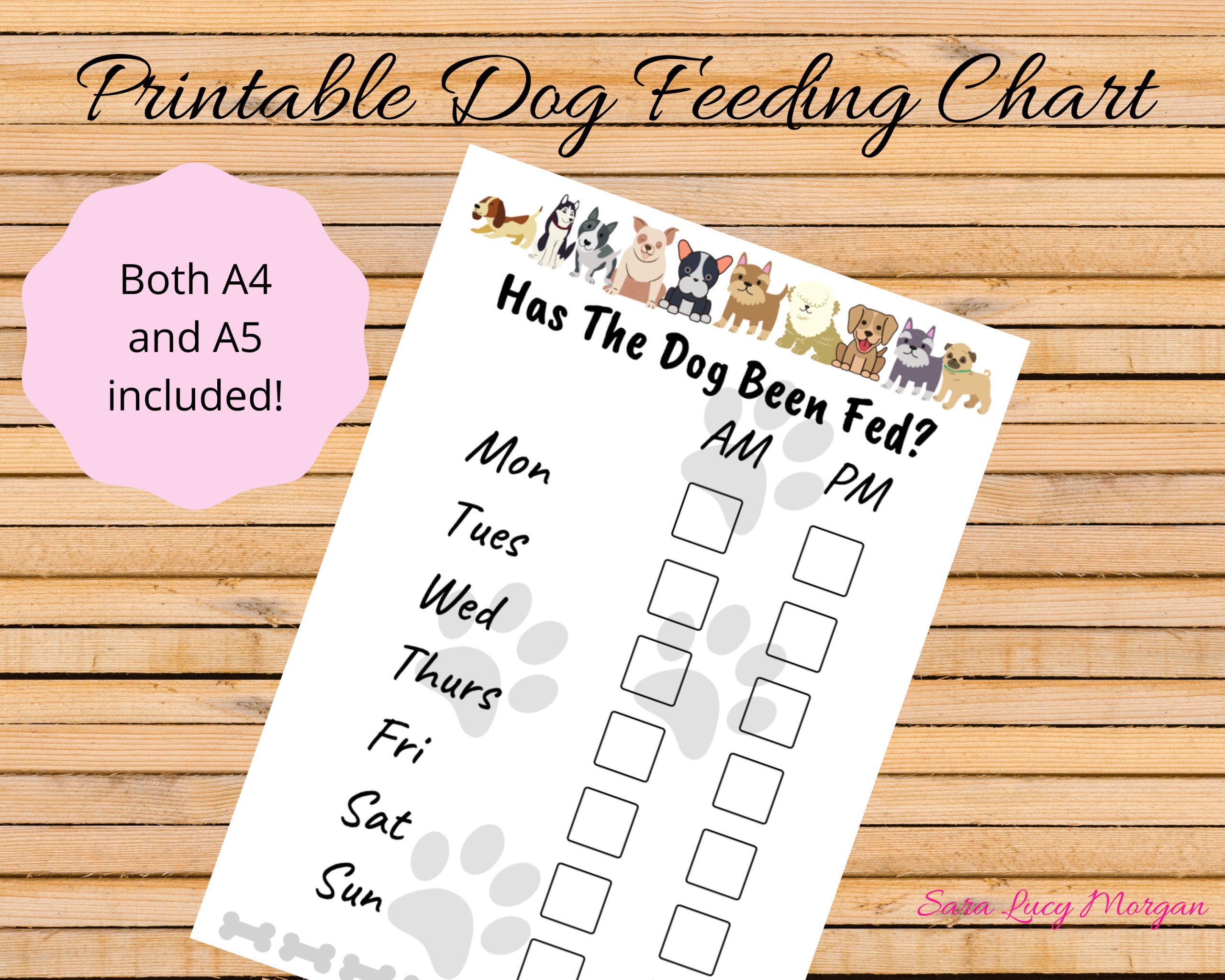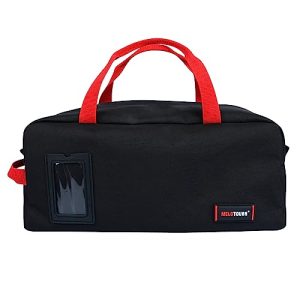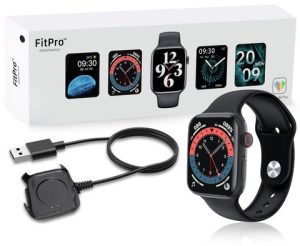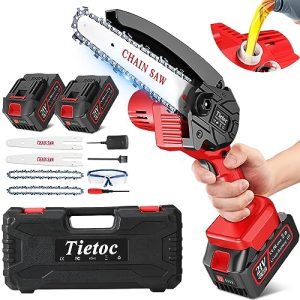Contents
In this article, you will discover a handy tool that every dog owner needs – the “Free Printable Dog Feeding Chart”. With this easy-to-use printable chart, you can track your furry friend’s meals and ensure they are getting the right amount of nutrition every day. Say goodbye to confusion and guesswork, as this chart provides a clear and organized way to keep your dog’s feeding schedule on track. Whether you have a puppy or a senior canine companion, this printable dog feeding chart is a must-have for every dog owner.
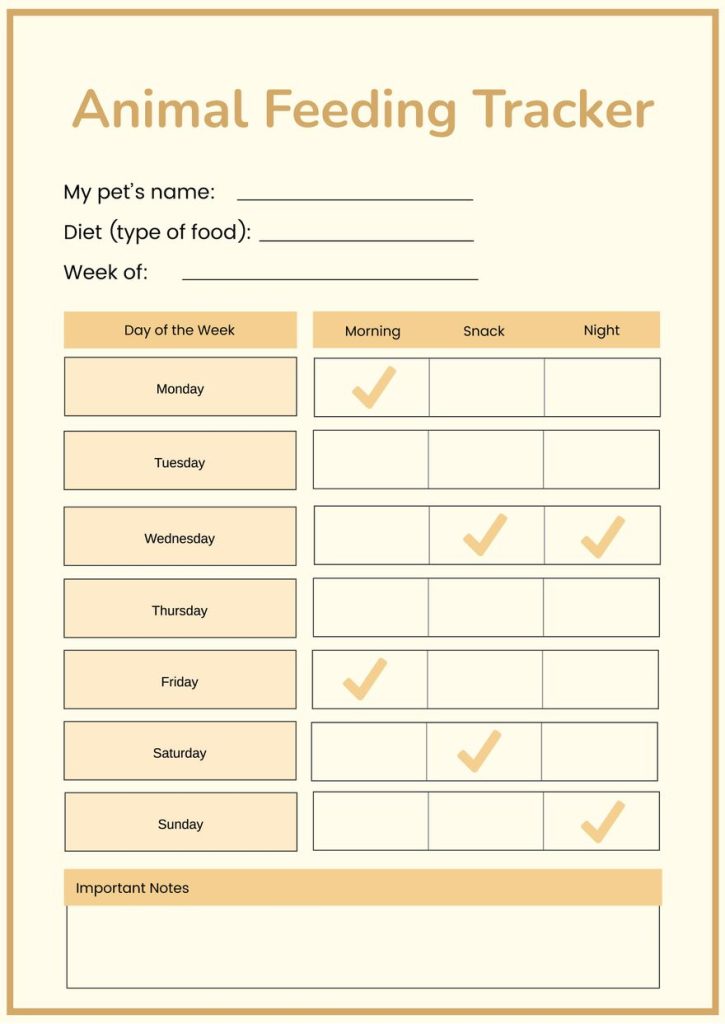
Understanding Dog Feeding
The Importance of Proper Dog Feeding
Proper dog feeding is essential for maintaining your furry friend’s overall health and well-being. Just like humans, dogs require a balanced diet to thrive. Feeding your dog with nutritious food in the right quantities can help prevent various health issues and ensure they have the energy they need to stay active and happy. Inadequate or improper feeding can lead to problems such as obesity, malnutrition, and digestive disorders. Therefore, it is crucial to understand the importance of proper dog feeding to provide your canine companion with the best care possible.
Different Types of Dog Food
When it comes to feeding your dog, there are various options to choose from. The most common types of dog food available in the market are dry kibble, wet canned food, and raw food diets. Each type has its own set of advantages and considerations. Dry dog food is generally more convenient and affordable, while wet canned food can be more palatable and hydrating for dogs. Raw food diets, consisting of uncooked meat, bones, and vegetables, are gaining popularity among dog owners who prioritize a natural and raw-based diet for their pets. It’s important to assess your dog’s specific needs, dietary preferences, and consult with your veterinarian to determine the best type of dog food for your furry friend.
Determining the Right Amount to Feed Your Dog
Feeding your dog the right amount of food is of utmost importance to maintain their ideal body weight and overall health. The appropriate portion size for your dog depends on factors such as their age, size, activity level, and breed. Overfeeding can lead to obesity and related health issues, while underfeeding can cause malnutrition and lack of energy. It is crucial to follow guidelines and recommendations provided by your dog food manufacturer, as well as consult with your veterinarian for personalized feeding recommendations. By ensuring your dog receives the proper quantity of food, you can support their overall well-being and prevent unnecessary health concerns.
Establishing a Feeding Schedule
Establishing a feeding schedule for your dog can provide them with a sense of routine and structure, promoting their overall well-being. Dogs thrive on consistency, and having a regular feeding schedule helps regulate their metabolism and digestion. Depending on your dog’s age and specific needs, you may need to feed them multiple times a day or provide meals at set times. Puppies typically require more frequent feedings, whereas adult dogs can usually be fed one to two times daily. It is important to consider your dog’s individual requirements and consult with your veterinarian to determine the most suitable feeding schedule for your furry friend.
Creating a Dog Feeding Chart
Why Use a Dog Feeding Chart?
A dog feeding chart is a valuable tool for pet owners to track and monitor their dog’s feeding habits. It allows you to keep a record of the type and quantity of food given to your dog, ensuring their nutritional needs are met consistently. By using a feeding chart, you can easily track any changes in your dog’s appetite, feeding patterns, or overall health. Additionally, a feeding chart can be helpful when consulting with your veterinarian regarding your dog’s dietary habits or when transitioning to a new food brand. It serves as a visual representation of your dog’s feeding routine and can assist in maintaining a healthy and balanced diet for your canine companion.
Choosing the Right Chart Format
Dog feeding charts come in various formats, including printable templates, digital spreadsheets, or even mobile applications. When choosing the right chart format, consider your personal preferences and convenience. Printable dog feeding charts are popular among pet owners due to their ease of use and accessibility. They can be easily customized, printed, and posted in a convenient location in your home. Digital options, on the other hand, allow for easy editing and sharing of information, and can be accessed anywhere using your electronic devices. Select a format that suits your lifestyle and ensures that you can accurately record and maintain your dog’s feeding information.
Including Essential Information
A comprehensive dog feeding chart should include essential information to accurately monitor your dog’s feeding habits. Start by noting down your dog’s basic details such as their name, breed, age, and weight. This information is particularly important as it serves as a reference point for determining the appropriate portion sizes and tracking any changes over time. Additionally, include sections to record the type of dog food, whether dry, wet, or raw, and the specific brand or recipe used. Keep a column to jot down the quantity of food provided for each meal and any special instructions related to feeding. Lastly, it may be beneficial to include a section to note down any observations or comments regarding your dog’s appetite, digestion, or overall well-being.
Customizing the Chart for Your Dog
Every dog is unique, and their feeding chart should be personalized to cater to their specific needs. For instance, if your dog requires medication or dietary supplements, create sections in the chart to note down the dosage and frequency of administration. If your dog has specific dietary restrictions or food allergies, include a section to highlight any prohibited ingredients or foods. By customizing the chart according to your dog’s individual requirements, you can ensure they receive the proper care and nutrition they need.
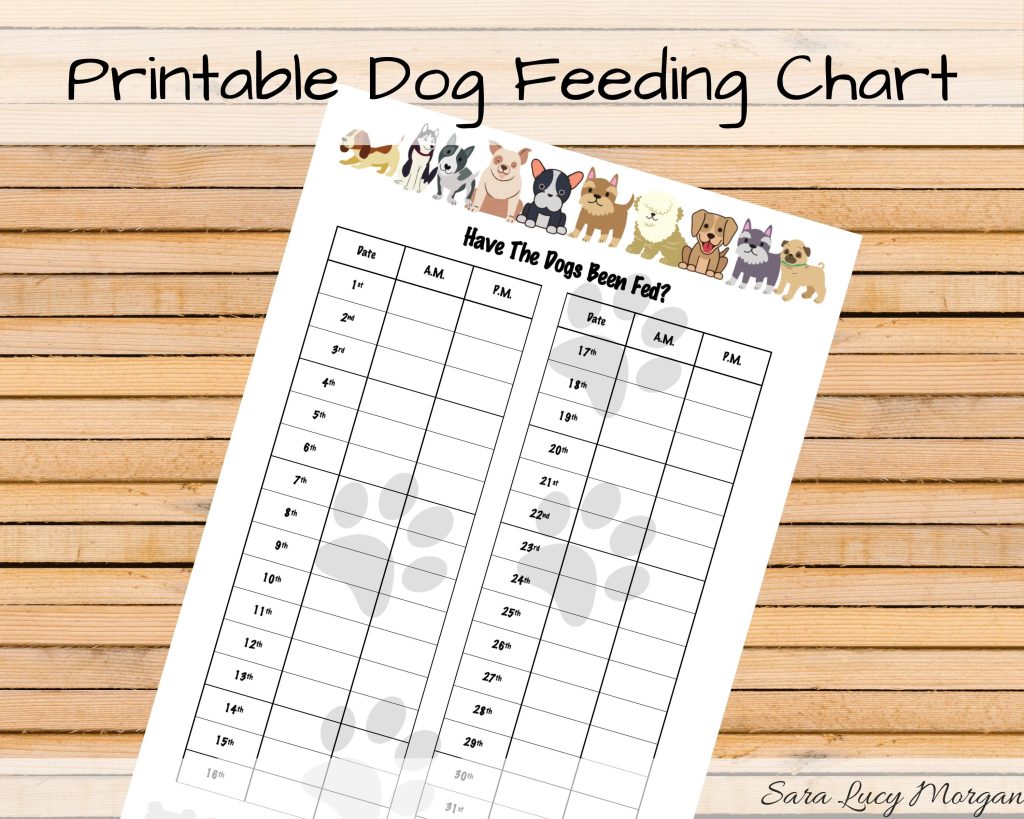
Available Dog Feeding Charts
Free Printable Dog Feeding Charts Online
The internet provides a multitude of resources for dog owners, including free printable dog feeding charts. Many websites offer downloadable templates that can be easily printed and utilized for tracking your dog’s feeding routine. Simply search for “free printable dog feeding chart” and explore the various options available. Ensure that the chosen template provides sufficient space for all the necessary information and is visually appealing for ease of use.
Dog Feeding Charts from Pet Stores
If you prefer a physical copy of a dog feeding chart, consider visiting your local pet store. Many pet stores offer stationery or resources specifically designed for pet owners, and you may be able to find pre-printed dog feeding charts. These charts often come in convenient formats and may include additional helpful information and guidelines.
Creating Your Own Dog Feeding Chart
If you prefer a more personalized approach, you can create your own dog feeding chart. Using a blank template or a spreadsheet software, such as Microsoft Excel or Google Sheets, you can design a chart that perfectly suits your dog’s needs. Create columns and sections for each essential piece of information, as mentioned earlier, and feel free to add any additional details that you find relevant for tracking your dog’s feeding habits.
Using a Free Printable Dog Feeding Chart
Finding a Reliable Source
When using a free printable dog feeding chart, it is important to ensure that the source is reliable and credible. Look for reputable websites or blogs that specialize in pet care and nutrition. Be cautious of any misleading information or websites that require unnecessary personal details to access the chart.
Printing and Preparing the Chart
Once you have found a suitable printable dog feeding chart, download and save it to your computer. Open the file and review its contents to ensure all the necessary sections are included. If required, make any customizations before proceeding to print. Once you are satisfied with the chart design, print it out using a standard printer and high-quality paper. Consider laminating the chart for durability if you anticipate regular use and exposure to potential spills or moisture.
Filling in Your Dog’s Details
After printing and preparing the chart, it’s time to fill in your dog’s details. Start by writing their name, breed, age, and weight in the designated sections. Take your time to ensure accuracy as this information will serve as a reference point for future feedings.
Adding Feeding Instructions
Next, record the type of dog food you are providing, whether it’s dry kibble, wet canned food, or raw. Include the specific brand or recipe name for clarity. Note down any specific instructions or guidelines provided by your veterinarian, such as the number of meals per day or any dietary restrictions.
Keeping Track of Feeding History
As you begin using the dog feeding chart, make it a habit to record the quantity of food provided for each meal. Update the chart regularly, ideally after each feeding, to maintain an accurate feeding history. Monitoring your dog’s feeding habits can help you identify any changes in appetite, detect potential health concerns, or ensure consistency in their diet.
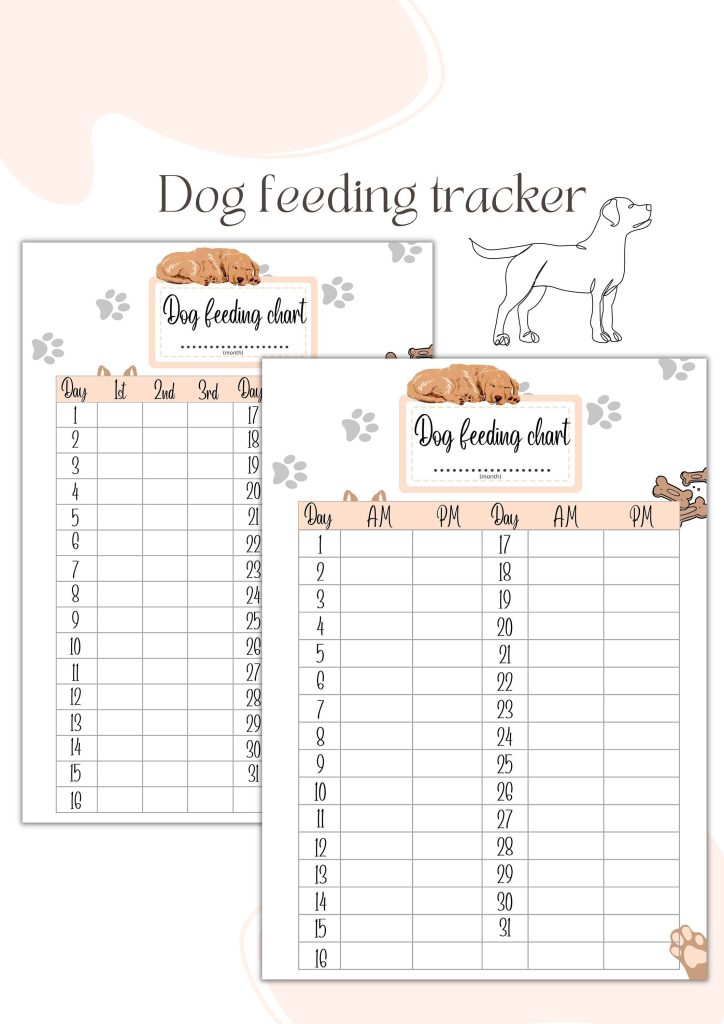
Tips for Feeding Your Dog
Consulting with a Veterinarian
One of the most important tips for feeding your dog is to consult with a veterinarian. Your veterinarian can provide valuable insights and recommendations specific to your dog’s breed, age, and health condition. They can guide you in selecting the right type of dog food, determining the appropriate portion sizes, and addressing any dietary concerns or allergies.
Choosing the Right Dog Food Brand
Selecting the right dog food brand is crucial for your dog’s overall health and well-being. Look for reputable brands that have a history of producing high-quality, nutritionally balanced dog food. Read ingredient labels to ensure the food contains essential nutrients and avoid brands with excessive fillers, artificial additives, or low-quality ingredients.
Monitoring Your Dog’s Health and Body Condition
Regularly monitor your dog’s health and body condition to ensure they are receiving adequate nutrition. Look out for signs of weight gain or loss, changes in coat quality, energy levels, and stool consistency. If you notice any abnormalities, consult with your veterinarian for further assessment.
Avoiding Overfeeding or Underfeeding
Overfeeding and underfeeding can have negative effects on your dog’s health. Follow the recommended portion sizes provided by your veterinarian or dog food manufacturer. Be mindful of treats and table scraps, as excessive indulgence can contribute to weight gain or nutritional imbalances. If you are unsure about the appropriate portion sizes, consult with your veterinarian to prevent overfeeding or underfeeding your dog.
Common Questions about Dog Feeding
How Often Should I Feed My Dog?
The frequency of feeding your dog depends on their age, size, and individual needs. Puppies typically require more frequent meals, usually three to four times a day, as they have smaller stomachs and higher energy requirements. Adult dogs can generally be fed one to two times daily. Consult with your veterinarian to determine the most suitable feeding schedule for your dog.
What Should I Do If My Dog Refuses to Eat?
If your dog refuses to eat, it is important to first rule out any underlying health issues. Loss of appetite can be a sign of illness or discomfort. If your dog’s refusal to eat persists, consult with your veterinarian for proper diagnosis and guidance.
Can I Switch My Dog’s Food Gradually?
Yes, it is generally recommended to switch your dog’s food gradually to avoid digestive upsets. Start by introducing small amounts of the new food mixed with their current food, gradually increasing the proportion of the new food over several days or weeks. This gradual transition allows your dog’s digestive system to adjust to the new food without causing any discomfort.
How Can I Determine If My Dog Is Overweight?
Determining if your dog is overweight requires assessing their body condition. If you are unsure, consult with your veterinarian. Generally, you should be able to feel your dog’s ribs without excess fat covering them, and there should be a visible waistline when looking at them from above. If your dog appears to be overweight, consult with your veterinarian for appropriate weight management strategies.
What Are Some Signs of Food Allergies in Dogs?
Signs of food allergies in dogs can include skin irritations, excessive itching, gastrointestinal upset (such as vomiting or diarrhea), chronic ear infections, or respiratory issues. If you suspect your dog has a food allergy, consult with your veterinarian for proper diagnosis and guidance.
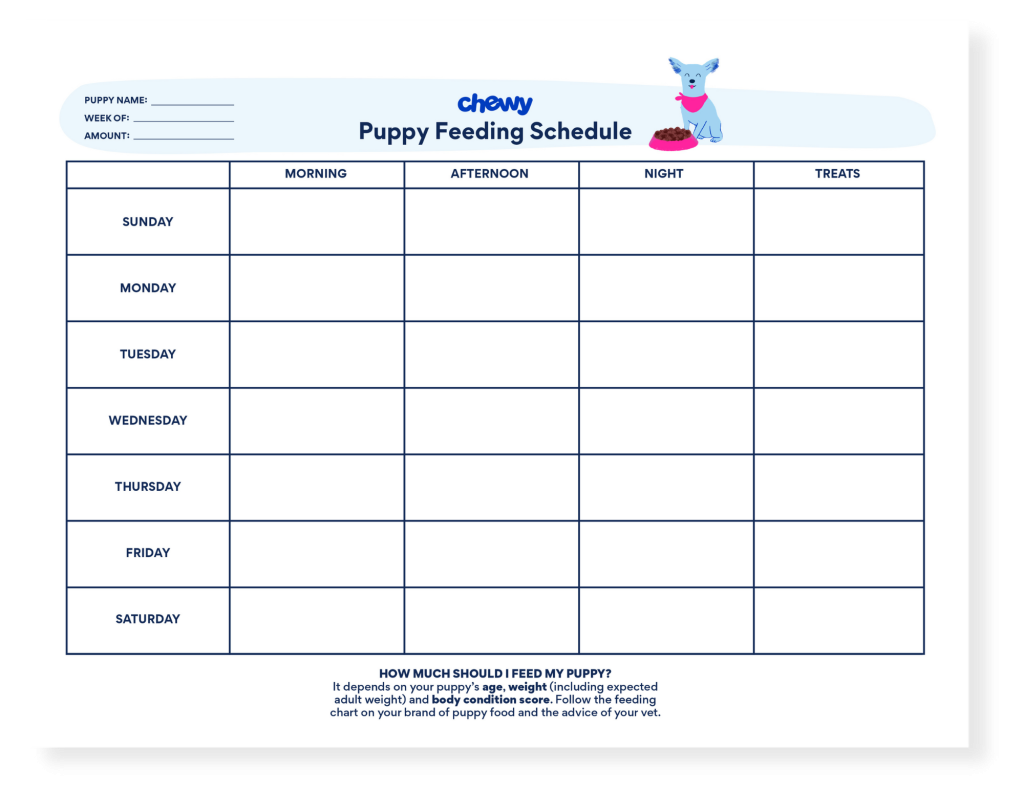
Conclusion
Implementing a dog feeding chart can greatly benefit your four-legged friend’s overall health and well-being. By understanding the importance of proper dog feeding, exploring different types of dog food, determining the right quantity to feed your dog, and establishing a feeding schedule, you can provide your pet with the optimal nutrition they need to thrive. Whether you choose to use a free printable dog feeding chart, purchase one from a pet store, or create your own, maintaining a comprehensive feeding record can help you track your dog’s dietary habits and promote a healthy feeding routine. Remember to consult with your veterinarian, choose the right dog food brand, monitor your dog’s health, and avoid overfeeding or underfeeding to ensure your furry companion has a long and happy life.

